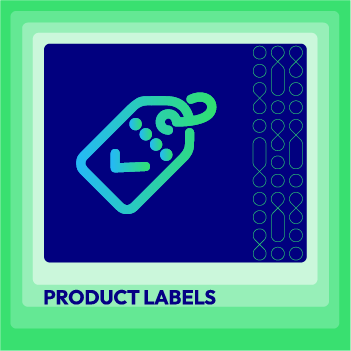Change Store Email Addresses - Mageplaza
What is SKU in Magento? How to Generate & Config SKU in Magento 2
Vinh Jacker | 08-04-2021

When deciding to be into eCommerce, there are some vital terminologies sellers need to not only know but have a deep understanding of their nature. One of them is SKU. An element that can ensure enhancing your eCommerce store’s efficiency and profitability incredibly.
That’s why this post is written for the importance of SKUs from a marketing perspective. So without further ado, let’s get started!
- About SKUs in Magento 2
- What are SKUs used for?
- How to Generate and Config SKU in Magento 2?
- Extra tips for building your SKUs
- The bottom line!
About SKUs in Magento 2
What is SKU - Stock Keeping Unit?
SKU is the acronym of Stock Keeping Unit. A code made up of letters and numbers. These stock keeping units help online sellers identify a product’s most essential characteristics, such as:
- Color
- Size
- Material
- Price
- Stock status
- And so forth
It can be said that the appearance of SKU in an online store’s sales and inventory management system is indispensable. Interestingly, there are no standards in creating an SKU since it’s tailored to each business’s products and services.

Above is a simple illustration of SKU at the Magento storefront. And of course, Magento allows store admins to create custom codes for each product and configure them easily from the backend - That we will mention later!
What does SKU consist of?
As mentioned above, SKU consists of a set of letters and numbers. To be more specifically, there are 4 components used to create an SKU, including:
- Letters
- Numbers
- Dashes and/ or Underscores: Usually play a role in separating particular information about the product
Take a T-shirt, for example. You are the seller, and the SKU for a small, black man sweater in the 2021 collection can be: MS-BK-S21.
In many cases, sellers can choose not to use dashes or underscores to shorten the code though it can be more tricky to track and identify a product. Still, it’s all up to your choice.

Like Uniqlo - a clothing apparel brand with thousands of products , their SKU format includes only numbers and letters.
Basically, an SKU includes the set of acronyms of a product’s distinguishing characteristics. The maximum length of an SKU in Magento 2 is 64 characters. For SKUs that are longer than 64 characters, you will receive an error message.
Distinguish between UPC, Product ID vs. SKU
In eCommerce, there are several different terminologies used as product identifiers. This property leads to a certain level of confusion and misunderstanding, especially when you have just the first step in the eCommerce industry.
3 out of the most common mistakes when it comes to product identifiers are:
- Product ID
- UPC
- SKU

Thus, together, in this post’s scope, let’s make clear the difference between these IDs associated with products, which isn’t an SKU.
- UPC (Universal Product Code)_Regularly printed as a barcode on product labels. It’s a global system of 12 digits used by multiple retailers for trade tracking purposes. Plus, created and administered by GS1
- Product ID_ A series of numerical digits used to identify a particular product and isn’t available to customers. Moreover, merchants use Product IDs as an internal product identifier
- SKU_Consist of both numbers and letters. The seller self-creates an SKU based on the product name and its attributes for marketing or internal tracking purposes

What are SKUs used for?
SKUs have an essential role in assisting store owners in performing many tasks related to inventory management, marketing activities, catalogs, and analysis of the store’s effectiveness.
So what makes SKUs important? In the easiest understanding, they help e-retailers in:
- Identify a specific product (amongst thousands of goods from the warehouse) across all store’s sales channels
- Track and manage the store’s inventory with ease during the ordering process. Better check and control the stock levels for maintaining the flow of products importing into the warehouse
- Thanks to SKUs, sellers can simplify the reconciliation process of product stock level, thus speeding up your warehousing and order fulfillment operations
- With the information reflected in each SKU (a product’s color, material, scale, etc.), you can forecast sales, thus reinforcing the catalog and planning long-term sales strategies based on customers’ needs
- Improve the communication between departments about product-related issues. In other words, salespeople or other teams can navigate a product quicker for better handling with customers problems
- Other marketing purposes
How to Generate and Config SKU in Magento 2?
It comes as no surprise when we go into an online shop, and each product has different colors, sizes, prices, and weights as well.

The steps for generating and configuring SKUs in Magento are pretty straightforward that even novice and inexperienced users can perform. Below is the whole process.
- Log in to your Admin account in Magento 2
- On the Admin sidebar, choose
Catalog > Products - Each product in Magento 2 will come with a different SKU. Thus, you just need to navigate to the product edit page of the one requiring updates
- Change the value in its
SKUfield - Tap on the
Savebutton at the top-right corner
The only drawback is that you have to update the SKU of each product at once manually. The whole process is repeated when it comes to a new item, which is time-consuming and ineffective at the same time. Realizing the limitations of Magento Default, as an expert in providing solutions for Magento users, Mageplaza has introduced a module dedicated to productivity improvement - The Mass Product Actions for Magento 2— now integrated into Order Grid for Magento 2.
In a brief look, this extension helps Magento users in:
- Perform mass updates to product attributes, related products, inventory, attribute set, category, and so forth
- Update price in bulk
- Offer the copy custom options
- Allow making product updates via pop-ups
Related posts:
- How to Get Product by ID, SKU in Magento 2
- How to configure Search by SKU in Magento 2
- Add Google Tag Manager to Magento 2
Extra tips for building your SKUs
Some tips for naming SKUs in Magento 2 SKU Configuration:
- Keep it simple and easy to remember (Recommend limiting the SKU to 8 - 12 characters). This length is enough for you to describe any product in details
-
Avoid spaces or special symbols such as ‘% or ’ in order not to lead to confusion in your inventory management system. You can use dashes “-“ or underscores “_” instead - Avoid some letters that are easy to be confused with the numbers in the system, like I or O
- Use exactly the same format for your whole SKU system. For example, Brand-product name/ category-Color-Size. Always put the classification ahead
- Create a coding system tailored to your organization with a detailed list of codes for every product’s characteristics like brands (Nike > Nk), colors (Black > Bk), sizes (Small > S), and so forth
The bottom line!
SKU is critical for efficient inventory tracking and management. That’s why its correct setup is crucial for any eCommerce business, specifically Magento-based ones, in this post’s scope. Though it seems like a daunting task, your business is worth the effort. If you have any questions about the SKUs in Magento 2, feel free to leave a comment below. We would love to give your suggestions as a trustworthy extension provider for Magento 2. Thanks for reading!









